The Saanen goat originated from Saanen Valley of Switzerland. They are the largest among all the dairy goat breeds. They are mainly raised for commercial milk production like jamunapari and alpine goat.
A female Saanen goat produces about 3.8 liters milk daily. Nowadays, Saanen goats are being raised throughout the world.
In United States this breed is one of the best and preferred dairy goat mainly for their consistency in producing large amounts of milk in accordance with their sturdiness, easy keepability and ability to tolerate environmental changes.
The main benefits of raising Saanen goat is that, their care and management is very easy (even a child can take care of them) and they produces milk highly.
Saanen goats are very popular for numerous reasons. They are great for milk production, and this is the main reason of their high popularity. Their milk is creamy and delicious.
Saanen goats are easy to take care of and they are friendly animals. They are also very popular for their white coats and gentle nature. They can adapt themselves well to different climatic conditions and environments.
Origin and History
As the name suggests, the Saanen goat comes from the Saanen Valley in Switzerland. People have been raising them for their milk since ancient times. And they are one of the oldest domesticated goat breeds in the world.
Farmers in the Saanen Valley, Switzerland carefully selected and bred these goats for their high milk production and also for their adaptability to mountainous terrain. The breed spread to other parts of Europe and eventually to other continents over time.
Today, the Saanen goats are found all over the world. And they are highly valued for their excellent milk production capability and friendly temperament.
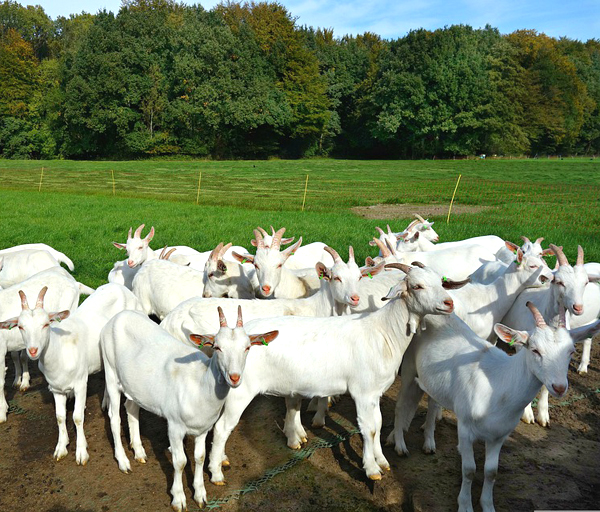
Characteristics
Mainly Saanen goats are of white colored. But sometimes biscuit colored goats can also be seen.There may have some black spots in the nose, ears and udder of this goat. The ears are straight to upwards.
Generally they have no horns, but some goats have horns. They have small sized legs and udder is of very big size. They have long sized neck. Their whole body is covered with small sized hair.
The produces milk highly among all the dairy goat breeds. They can adopt themselves with the weather of any region of the world. They love to stay under shade and can’t tolerate sunlight highly.
An adult male Saanen goat weights about 70-90 kg and an adult female goat weights about 60-70 kg. On an average a female goat produces about 3.8 liters milk daily. Their milk contain about 3.5% fat. And this milk is very suitable for preparing all types of dairy or milk products.
Housing Requirements
Arranging a good, secure and comfortable housing system is very important for raising Saanen goats. Because these love to stay in shady place and can’t tolerate heavy sunlight. A good house also protects them from all types of predators, adverse conditions and all types of diseases.
Ensure that their house is clean and well-ventilated to keep the goats healthy. Keep enough space inside the house for each goat so that they can move around comfortably. They also need a fenced area outside where they can graze on grass and play. Make the fence strong and secure enough to keep the goats safe from predators.
Dietary Requirements
As Saanen goats are highly milk productive so, they need some extra protein and energy with their regular feed. Along with fresh and good food always provide them fresh and clean water regularly. See what to feed goats. Remember, feeding these goats is very important for getting good production.
Reproduction/Breeding
Saanen goats are naturally very good breeders. They typically breed every year. And each time produce one or a pair of kids. Just keep good ratio of male and females in your farm, and your goats will do their job.
After successful mating, the does remain pregnant for 5 months. Take extra care of breeding bucks and pregnant does.
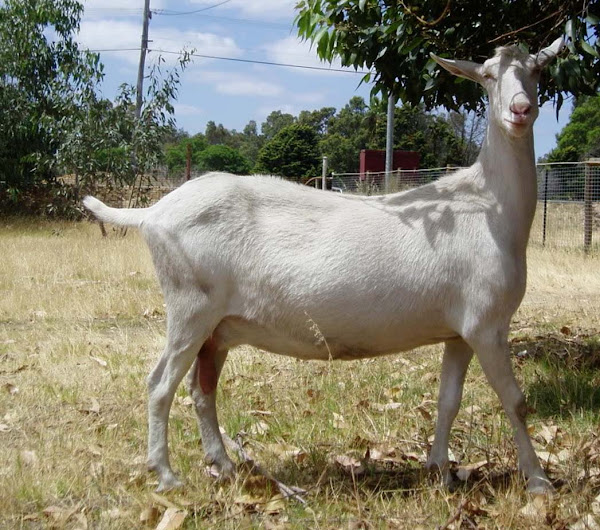
Health Monitoring
Keeping these goats healthy is very important for their well-being and productivity. Perform regular veterinary check-ups are to detect and prevent diseases and illnesses. Provide them a clean and comfortable living environment.
Ensure proper nutrition (including a balanced diet and access to clean water) and always monitor for signs of illness (such as changes in behavior or appetite). Practice good hygiene for keeping your goats healthy (such as keeping their living area clean and trimming their hooves regularly).
Caring
It is very easy to raise Saanen goat. They don’t need any special and extra care. You can raise them with your other animal easily. Even a child can raise and take care of them easily. But taking some extra care and management will increase their health and production.
- Always feed your goat fresh and good quality food which has proper nutrition value and enriched with all necessary feed ingredients.
- Milking process of your goat should done twice a day.
- Try to make a fence around your farm area and always keep the goats inside the farm.
- Ensure sufficient supply of fresh air and light inside their house.
- Clean the house and used equipment of goat regularly.
- Always keep the house dry.
- Keep the male goats separated from the female.
- Take some extra care of the pregnant goats, breeding bucks and kids.
- Provide them sufficient fresh and clean water.
- If needed call a veterinarian as soon as possible.
Behavior/Temperament
Saanen goats are known for their friendly behavior and gentle temperament. They are usually calm in nature and are very easy to handle. They are great for beginners with limited experience in goat farming business. Saanen is such a goat breed which is generally peaceful and rarely aggressive.
Lifespan
Average lifespan of Saanen goats typically vary between 10 and 12 years, although some may live longer with proper care.
Uses
Main purpose of these goats is milk production. They are known for their high milk yield and are often kept on dairy farms for this reason. Their milk is creamy and nutritious, and is suitable for drinking or for making cheese, yogurt, and other dairy products.
Along with milk production, these goats can also be raised for their meat. Although raising these goats for meat is less common due to their smaller size (compared to meat-specific breeds). Some people also prefer these goats for raising as pets, mainly for their friendly temperament and adaptability to various conditions.
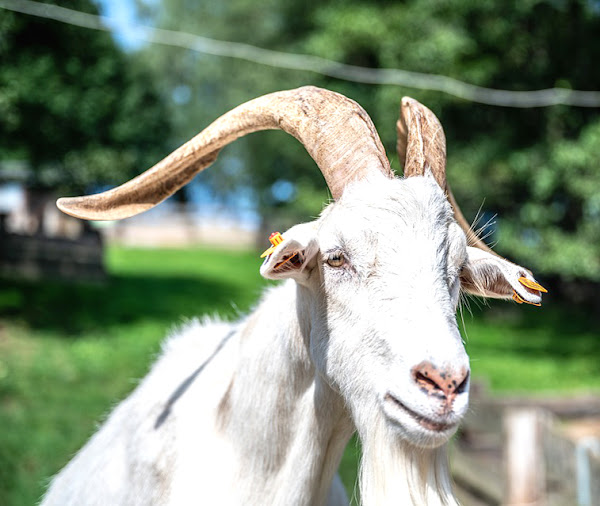
Price
Saanen goats are very popular among the dairy goat farmers and breeders throughout the world. They are very popular mainly for their high milk production and gentle temperament. Their exact price can vary depending on numerous factors. Please visit some existing farms in your area to learn more about current pricing.
Pros and Cons of Saanen Goat
Like many other goat breeds, these goats also have some advantages and disadvantages. Here are some pros and cons of Saanen goats:
Pros:
- High milk production
- Also good for meat production
- Gentle temperament
- Adaptability to various conditions
- Highly sociable
- Good conformation
Cons:
- Prone to health issues
- High feed requirements
- Potential for overbreeding
- Vulnerability to predators
- Limited meat production compared to meat goat breeds
Review full breed profile of the Saanen goat in the following table.
| Breed Name | Saanen | |
| Other Name | None | |
| Breed Purpose | Milk | |
| Breed Size | Medium to Large | |
| Buck | About 70-90 kg | |
| Doe | About 60-70 kg | |
| Horns | No | |
| Climate Tolerance | All Climates | |
| Coat Color | White | |
| Good for Stall Fed | Yes | |
| Rarity | Common | |
| Country/Place of Origin | Switzerland |

Frequently Asked Questions (FAQs)
People ask many questions about Saanen goats. Here we are trying to list the most common questions about this dairy goat breed, and trying to answer them. Hope you will find your answer. Don’t hesitate to ask us if you have more questions.
How much milk does a Saanen goat produce?
Generally, a Saanen goat can produce up to 3 liters of milk daily. And between 700 and 900 liters of milk in a lactation period of 280-300 days.
What do Saanen goats eat?
Saanens are just like many other domestic goat breeds and they eat everything what other goat breeds eat. But as it is a dairy goat breed, so try to provide them with enough green feeds.
How much does a Saanen goat cost?
Exact cost of Saanen goat can vary depending on some factors such as age, breeding quality, and location. On an average, you might expect to pay anywhere from $100 to $500 for a goat. Although, exact price may vary.
How much milk does a Saanen goat produce per day?
Saanen goats are highly milk productive. On an average, a doe can produce 2 to 4 liters of milk per day during peak lactation.
What is the Saanen goat used for?
These goats are mainly used for milk production. They are among the top milk producing goat breeds.
Where did the Saanen goat originated from?
The Saanen goat originated from Saanen valley of Switzerland.

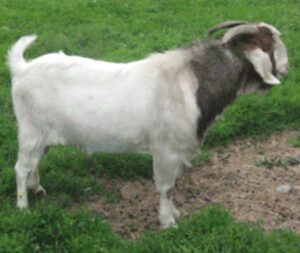
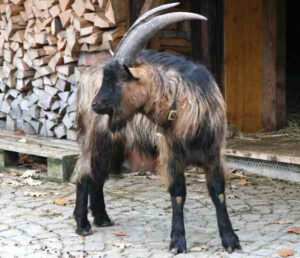

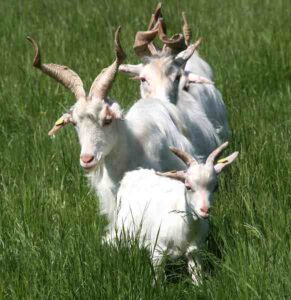
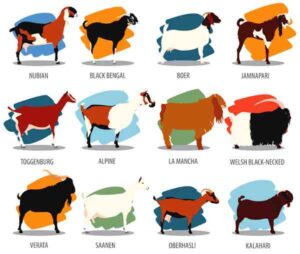
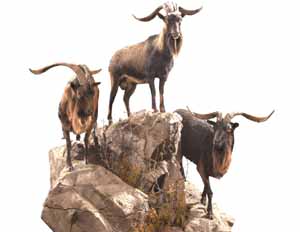
i m interested to buy saanen goats. how can i buy it abroad and import to Pakistan. what will be the cast after reaching to Pakistan